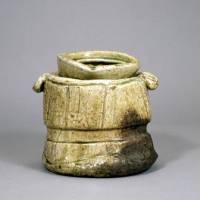Aug. 8-Oct. 12
In terms of political history, the Azuchi Momoyama Period, which began in 1573, is usually referred to as lasting to either 1598, at the death of Hideyoshi Toyotomi, or 1603, the beginning of Tokugawa Ieyasu's rule. For artistic purposes, however, it is often regarded as ending in 1615, when Tokugawa defeated enemies in Osaka, and a time when art began to experience a major shift in style.
The Momoyama Period was one of both decorative and austere art. This exhibition showcases elaborate byōbu folding screen paintings by Kano School artists, monotone suibokuga ink-wash paintings by Tohaku Hasegawa (1539-1610) and examples of the period's revolutionary styles of pottery, such as that of the Shino, Oribe, Kogaratsu, Takatori, Bizen and Iga kilns.
Idemitsu Museum of Arts; Teigeki Bldg. 9F, 3-1-1 Marunouchi, Chiyoda-ku, Tokyo. Yurakucho Stn. 10 a.m.- 5 p.m. (Fri. till 7 p.m.). ¥1,000. Closed Mon. 03-5777-8600; www.idemitsu.co.jp/museum

















With your current subscription plan you can comment on stories. However, before writing your first comment, please create a display name in the Profile section of your subscriber account page.